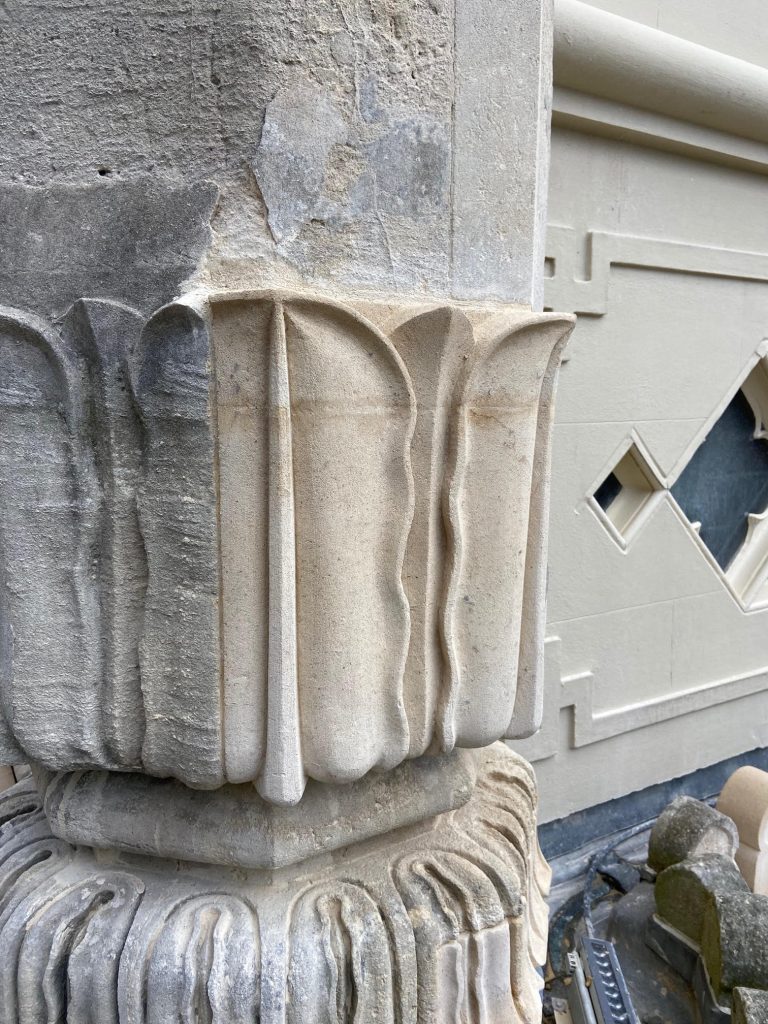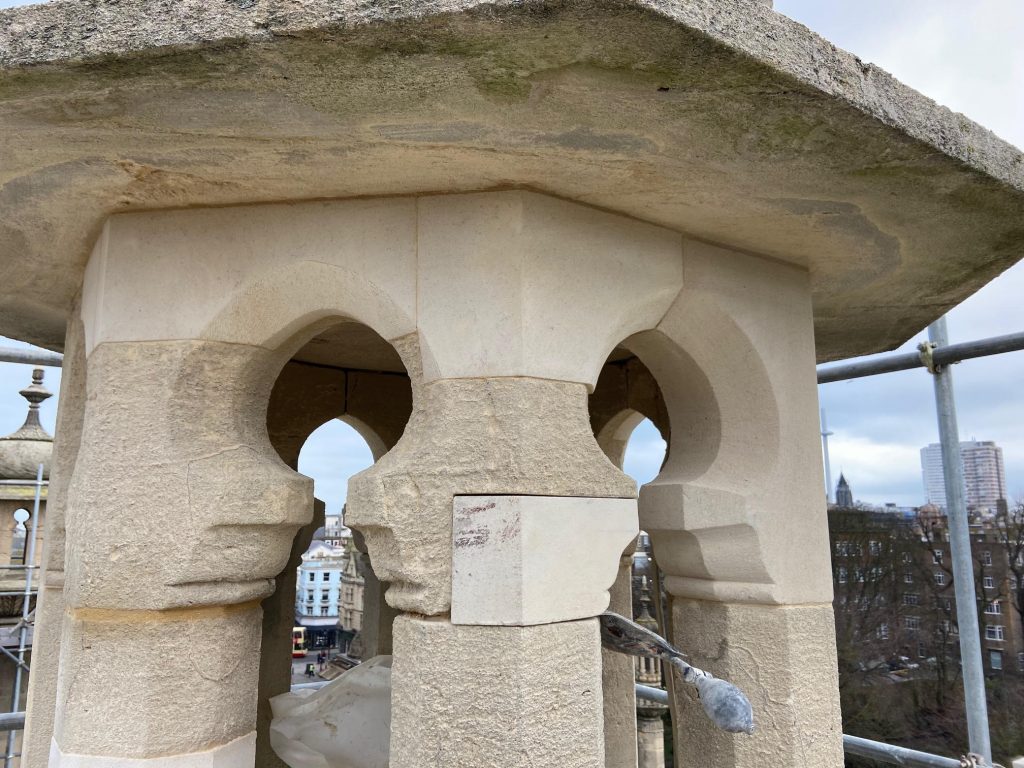
DBR (London) Limited restores Grade I listed Royal Pavilion, Brighton
Founded in the 16th Century, Brighton was a small, inauspicious fishing village until the 1700s when it rapidly rose to become the largest town in Sussex.
In its early days, the town was characterised by its striking Georgian architecture and, in 1787, under the supervision of George, Prince of Wales (later George IV) the Royal Pavilion was built. Serving as a seaside retreat for the hedonistic heir to the throne, it thrust Brighton into the forefront of British high-society.
From 1815 to 1822, while George was Prince Regent, this luxurious residence was completely transformed by celebrated architect John Nash. He redesigned what was once a modest villa into the impressive Indo-Saracenic palace we see today.
Fast forward to the 21st century and the Royal Pavilion remains a prominent landmark in this bustling coastal town and hugely popular tourist attraction. Inevitably, time has begun to take its toll, calling for a variety of necessary repairs.
Using a range of expert stonemasonry techniques, leading UK conservation specialist, DBR was contracted to restore this awe-inspiring, historic building to its original splendour.
Regal repairs
Stonework is the core activity of DBR’s London and Southern divisions. Having worked on many of the UK’s important heritage sites, such as Chichester Cathedral, Scotney Castle, Hampton Court Palace, Buckingham Palace and Westminster Abbey, the contractor was the go-to choice for Brighton & Hove City Council.
DBR’s masonry experts commenced work in February 2020, and are currently replacing the Pavilion’s iconic stone minarets, domes and façades.
Whilst the project team are no strangers to complex stonework, the roof’s tented structure and geometrically complicated, Eastern-inspired onion domes present a number of unique challenges. For example, DBR is carving the structure’s required Bath Stone (oolithic limestone) by hand, to achieve the detail and finesse required to achieve the building’s ornate architecture.
Leaving no stone unturned
Due to finish later this year, the conservation process has so far been successful. However, there have been a few challenges. First, as the roof and domes aren’t load-bearing, erecting the necessary scaffolding is an incredibly difficult and delicate task.
“Historically, the Royal Pavilion began as a guesthouse, which then morphed into a grand palace,” comments Adrian Attwood, Executive Director of DBR. “In this sense, it’s similar to a Russian doll: on top of the original structure, additional frameworks were built, and then on top of those, a more elaborate façade. This makes the roof and domes especially fragile as they are effectively fabric draped over layers of framework. The roofscape also has different levels, skylights and stained glass elements, which further make scaffolding tricky.”
Secondly, in addition to the minarets, roof and domes, DBR is replacing the Pavilion’s Jali screens, which bring their own set of challenges. “These latticed screens are also made of stone, which has significantly eroded,” continues Attwood. “In order to fix them, we’ve had to produce finely carved replacement stone which looks like a sheer curtain or tent. This is an incredibly difficult task, and one that requires great care and close attention to detail.”
Turning to technology
In combination with the team’s exceptional stonemasonry skills, DBR is using various digital tools and technology to successfully carry out the repairs.
With the assistance of drones, they have been able to survey roofs and façades for defects. This has helped them to update clients on progress and also means that they don’t always have to erect scaffolding in hard-to-reach areas, which is usually the case with historic buildings.
Craft Skills
DBR’s highly skilled teams of stonemasons are using traditional skills to hand carve the ornate and fine stone elements. A workshop has been set up on site to carry out the carving using hand tools, which ensures accuracy and enables the stone carvers to be a part of installation process as well.
Conclusion
Despite COVID-19, work on the Royal Pavilion continues at a steady pace. DBR has also been able to set up outdoor welfare cabins in the building’s spacious, surrounding grounds, allowing sufficient air circulation for team members to carry out their work safely.
In addition to DBR’s commitment to safety, the company’s diverse skillset and wide range of services make it stand out from the competition. “We’re used to taking on projects which require a huge amount of problem solving” concludes Attwood. “This is something we enjoy as it gives us the opportunity to apply our specialised knowledge to repair, and often enhance, the buildings we work on. As a long-term resident of Brighton, this project is particularly close to my heart, and I’m honoured to be able to help restore the Royal Pavilion to its magnificent original state with the help of my team.”
For more information about DBR and its projects, visit: https://www.dbrlimited.com.






